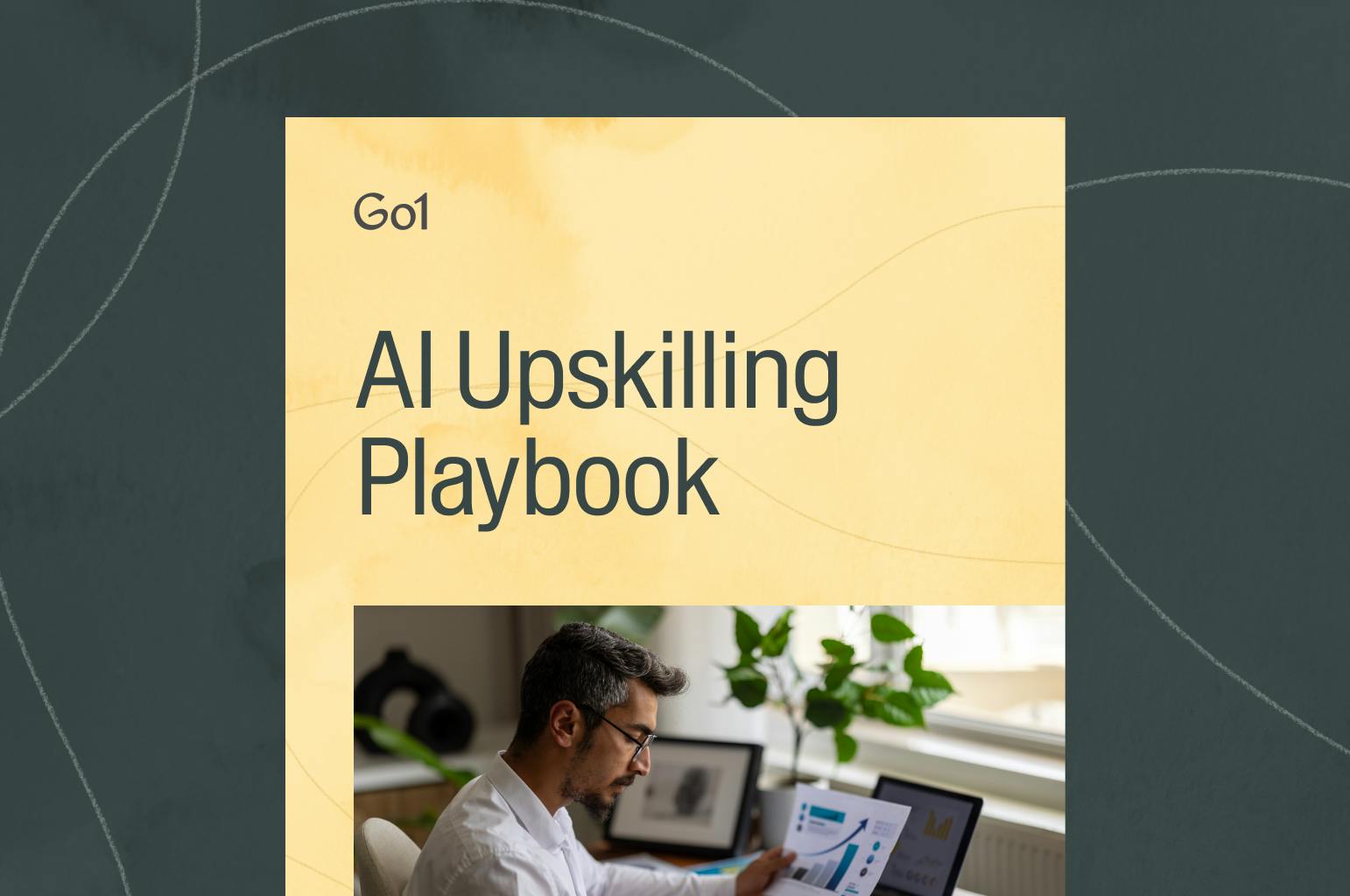Why is a learner-centred approach important?

Consider two divergent L&D strategies. Option one: learners are assigned generic training. They have no say in when or where they complete the training and weren’t consulted on the subject matter or the training's broader objectives.
Option two: learners are a central part of the training process, consulted throughout. Their goals and needs are considered, and they are given bespoke training to help meet these goals. Which approach is more likely to lead to engaged, happy learners?
Obviously, option two is the winner. As such, a learner-centric approach to L&D is vital. Yet, many L&D teams still trip at this hurdle. It makes intuitive sense that learners will be happier and more engaged when their needs are centred, and they are consulted throughout the training process.
And this is only the tip of the iceberg. A learner-centred approach is essential for high-performing L&D teams, with wide-ranging benefits from improved retention to increased profitability.
With this in mind, we’ll answer the question on everyone’s lips: why is a learner-centred approach important? We’ll start by defining learner-centred approaches, before analysing how to adopt a learner-centred approach, and concluding with four benefits of learner-centred approaches.
Ready to put your learners first? Start here.
What is a learner-centred approach?
A learner-centred approach is a style of teaching that puts a student’s needs, goals, and objectives front and centre. As the name suggests, taking a learner-centred approach means centring your learners as the key pieces in your instructional puzzle.

A learner-centred approach (also known as student-centred learning) focuses on making the student the focal point of the learning process. It involves making the student responsible for their learning and development which is facilitated by a trainer, tutor, or teacher.
LearnUpon expands on this, explaining that a learner-centred approach “views learners as active agents. They bring their own knowledge, past experiences, education, and ideas – and this impacts how they take on board new information and learn.”
They elaborate, contrasting this approach with traditional behaviourist views of learning: “it differs significantly from a traditional instructor-centred approach. Traditional learning approaches were informed by behaviourism, which sees learners as ‘blank slates’ and instructors as experts who must impart all the relevant information. This approach sees learners as respondents to external stimuli.”
For a more detailed explanation of behaviourism in L&D, see our recent blog series on Cognitive learning theory and the strategies that L&D teams should use to apply cognitive learning theory.
Thus, rather than designing generic, one-size-fits-all training and pushing it out to your learners, a learner-centred approach means taking a more active, considered, and bespoke view of learning. Learners are not blank slates waiting patiently to be filled with knowledge, but rather active participants with ideas and preferences about their learning journey.

Finally, eLearning Industry adds that “a learner-centric design approach focuses on customising the learning experience to the learner rather than customising the learner to the Instructional Design. Furthermore, it seeks to understand all about the learners first before designing an experience for them.”
Why take a learner-centred approach?
Utilising a learner-centred approach and placing students at the centre of the learning process means the student is the focus. Having a tutor act as a facilitator means students guide their learning so they can put their interests first.
The advantages of a learner-centred approach become apparent when used in an adult learning environment, such as the workplace. This is because adults are more independent than younger students and are also more accountable. It also encourages students to become more confident problem-solvers and promotes a learning mentality.
How to adopt a learner-centred approach
Now that we understand what a learner-centred approach is, the question becomes, how can my L&D team adopt a learner-centred approach?
Conduct a learner needs analysis
The best starting point to adopt a learner-centred approach is conducting a learner needs analysis. To centre your learners and put their needs first, you need to understand what they want, including:
- What do they already know? What is their learning background and history?
- What are the current gaps in their knowledge?
- What are their short-term learning goals?
- What are their long-term learning goals?
- What new skills do they want to gain?
- What subject matter would they like to focus on?
- How do they like to learn?
- Do they prefer digital learning, in-person instruction, or blended learning?
Once you comprehensively understand your learners' needs, wants, and goals, you can implement an L&D plan that centres your learners.
Accordingly, to take a learner-centred approach, it is vital to actively consult your learners about what’s working, what isn’t, and what they’d like more of in the future. Most importantly, check in with learners throughout every step of the process.
For more in-depth details on conducting a learner needs analysis, see our article on how to carry out a training needs assessment, as well as our articles on what the modern learner needs and making it simple to conduct a needs analysis conversation.
Other strategies to centre learners
Once you have conducted a learner needs analysis and have a thorough understanding of what your learners need, there are several other strategies to take a learner-centred approach. Remember, these strategies will largely depend on what you discover in your learner needs analysis, as every learning culture is unique. Therefore, there is no one-size-fits-all solution to creating a learner-centred strategy.
One suggestion, via eLearning Industry, is to “dig deep into the data to determine what’s most relevant to learners. Use this data to custom-design individual, high-quality learning experiences. The goal is for each learner to have a custom experience that covers their specific needs.”
Other potential strategies include:
- Embracing collaborative learning
- Gamifying your learning to increase engagement
- Offering microlearning opportunities to allow learners to learn on the go at their own pace
- Developing a culture of open feedback
- Most importantly, providing learners with enough time to learn (more on that in a second!)
How to measure the effectiveness of a learner-centred approach
Measuring the effectiveness of a learner-centred approach is relatively simple. You should look for changes in the following areas:
- An increased willingness to learn
- A higher level of engagement
- Improved collaboration
- Effective upskilling and development
- Greater confidence and job satisfaction
- Higher levels of productivity
- Improved time management and meeting of deadlines
Compare this to the impact of training following previous teacher-centred training and you will likely see a marked improvement.
4 benefits of learner-centred approaches
1. What do high-impact teams do best?
When organisations prioritise L&D and centre their learners at the heart of everything they do, the results can be astounding.
For example, MindTools’ 2022 L&D Benchmark Report found that 79% of high-impact learning cultures (HILCs) support employee career development through digital learning. In contrast, just 9% of low-performing teams do the same, meaning there’s a correlation between learner-centred approaches and high-performing teams.

And this is just the beginning. MindTools’ report also found that 79% of HILCs draw on internal data to support learning vs just 9% of low-performing teams. Moreover, a massive 90% of HILCs say their learning strategy encourages collaboration, compared to just 4% of low-performers.
Finally, and perhaps most tellingly, 86% of HILCs say they focus on achieving desired performance outcomes for employees, while 93% include activities that help employees practise for their desired outcomes. The comparative numbers for low-impact teams? 16% and 25% respectively.
Therefore, teams that centre their learners, support career development, encourage collaborative learning, and focus on achieving employees’ desired goals are far more likely to succeed.
2. Improve retention
Not only do organisations that put their learners first perform better, but they also retain top talent for longer.

76% of employees say they are more likely to stay with a company that offers continuous training. Similarly, 94% of employees say they would stay at a company longer if it invested in their professional development.
Likewise, better training and development opportunities would prevent 86% of millennials from leaving their position. Finally, companies that provide professional development opportunities have 34% higher retention rates.
Again, the message is clear: by centring your learners and taking care of their learning needs, they’re likely to stick around for significantly longer.
3. Give learners what they want
Time and time again, we return to this point: people desperately want to learn. Yet, they feel like they don’t have time. So, centring your learners and giving them more time to learn can make a huge difference.
As we recently explained in our article on How employees like to learn, nearly 4 in 5 (78%) employees are happy to learn new skills whenever they can throughout the working day. Further, 59% are willing to learn outside work hours to improve their job performance. Additional research shows that 94% of learners see the career benefits of making more time to learn.
Despite this, 91% of L&D teams are either concerned or very concerned that managers are reluctant to make time for learning. What’s more, two-thirds of employees say they barely have enough time to do their jobs, let alone engage in professional development. Finally, 49% of people don’t have time to learn at work, according to LinkedIn.
Here, a disconnect emerges: people are desperate to learn but rarely have enough time. A learner-centred approach can address these issues by listening to learners' concerns and giving learners more of what they want — time to learn!
4. Improve profitability
Finally, a learner-centred approach doesn’t just give learners more of what they want — it can also improve your bottom line.
Companies that put learners first by investing in L&D have a 24% higher profit margin than those that spend less on training. Additionally, 72% of organisations believe that their business gains a competitive advantage by investing in digital learning.
It’s a win-win!
What are some potential challenges of a learner-centred teaching method (and how to solve them)?
Making the switch from teacher-centred to learner-centred is important if you want to get the most out of your employees. However, the challenges of a learner-centred approach can potentially be off-putting. Luckily, each challenge has a solution that you can implement.
How can tutors facilitate when it comes to eLearning?
eLearning is a valuable tool for developing employees, especially as more businesses turn to remote and hybrid working. After completing a course, consider arranging group sessions so teams can collaborate and discuss what they’ve learned.
How can you learn certain complex or technical skills if students are expected to lead the learning experience?
The learner-centred approach doesn’t completely remove teachers from the learning process, it simply allows students to guide their development. Several adult learning principles cross over with learner-centred approaches to improve how adults learn.
How can you create a learning structure facilitated by a trainer when there are so many variables?
The material from which students learn won’t be any different - just how students engage with this material. While students should be the focus of learning, it’s also important that your business monitors engagement.
What if students are at different levels or don’t adapt well to a learner-centred approach?
Students should be given enough time to complete their training so learners of all levels can progress. If students are struggling to adapt to a learner-centred approach, try introducing these techniques slowly to give learners more time to adjust.
Learning made simple

Related Articles

Application Guide: How to use the Go1 AI for L&D Maturity Assessment to assess our workforce AI capability

AI upskilling made clear: A practical guide to building an AI-ready workforce

Go1 welcomes PepTalk

5 Data-Backed Insights Shaping the Future of AI in Workplace Learning

Train smarter, spend less
Train smarter,spend less
Connect with a Go1 expert to explore the best training options for your organization—no pressure, just solutions that work.